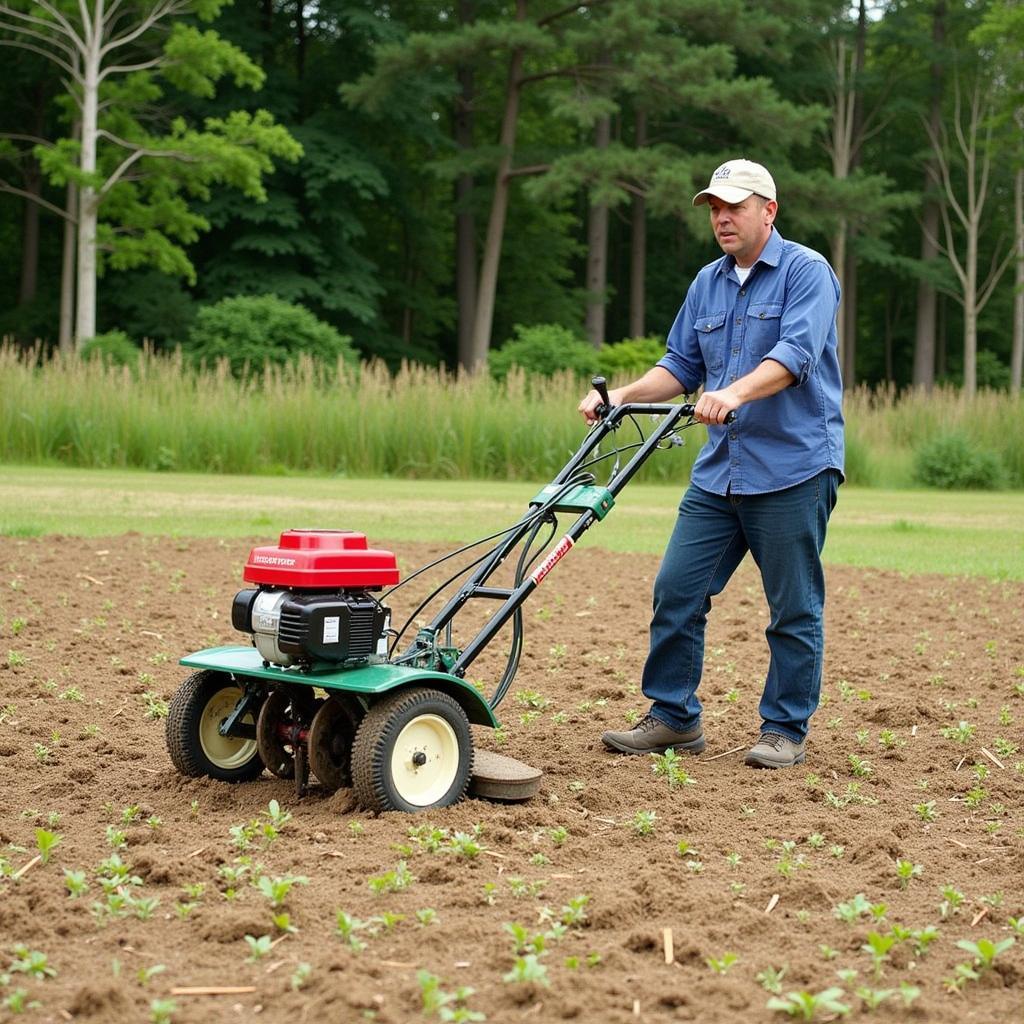Food Plot Seeders are essential tools for anyone serious about wildlife management and creating thriving food plots. Whether you’re a seasoned hunter or a beginner, understanding the nuances of food plot seeders can significantly impact your success. This guide delves into the world of food plot seeders, covering everything from choosing the right equipment to optimizing your planting strategies. After the first frosty days of fall, consider checking out fall deer food plot seed.
Choosing the Right Food Plot Seeder
Selecting the appropriate food plot seeder depends on several factors, including the size of your plot, the type of seed you’re planting, and your budget. For smaller plots, a hand-held spreader might suffice, while larger areas often require a tractor-pulled seeder or ATV-mounted equipment. Consider the terrain as well; some seeders are better suited for hilly or uneven ground. Different seed types, like clover or brassicas, also have varying seeding rate requirements, influencing your seeder choice. Finally, establish a budget before you begin shopping, as food plot seeders range from affordable hand-held models to more expensive, specialized equipment.
For those looking for tractor-mounted options, a grain drill for food plots offers precise seed placement and excellent ground contact.
Preparing Your Food Plot for Seeding
Before you even think about using your food plot seeder, proper plot preparation is crucial. This involves clearing existing vegetation, testing the soil, and amending it as needed. Soil testing helps determine the pH level and nutrient content, allowing you to adjust accordingly for optimal seed germination and growth. Consider factors like sunlight exposure and water drainage, as these significantly affect plant growth. A well-prepared plot ensures that your seeds have the best possible chance to thrive.
 Preparing the Food Plot for Seeding
Preparing the Food Plot for Seeding
Using Your Food Plot Seeder Effectively
Once your plot is prepared, it’s time to use your food plot seeder. Calibrate your seeder according to the seed type and recommended seeding rate. This ensures even distribution and prevents over- or under-seeding. Follow the manufacturer’s instructions for operating your specific seeder model. For larger seeders, ensure proper attachment to your ATV or tractor. Pay attention to your seeding pattern to avoid gaps or overlaps.
If you’re operating an ATV, dedicated food plot equipment for ATV can greatly improve efficiency and results.
Maintaining Your Food Plot Seeder
Proper maintenance is essential for extending the life of your food plot seeder. After each use, clean the seeder thoroughly to remove any dirt, debris, or residual seed. Lubricate moving parts as needed, and store the seeder in a dry, protected location. Regular maintenance prevents rust, corrosion, and other damage, ensuring your seeder is ready for the next planting season.
Maximizing Your Food Plot Success
Beyond the seeder itself, several other factors contribute to successful food plots. Choosing the right seed variety for your region and target wildlife is critical. Consider factors like deer preference, growing season, and nutritional value. Regular maintenance, including weed control and fertilization, helps ensure your plot thrives throughout the season.
If you’re seeking a no-till option, research the best no till drill for food plots to minimize soil disturbance and maximize seed-to-soil contact.
Woods Food Plot Seeders
Woods food plot seeders are renowned for their durability and performance. Known for their robust construction and innovative features, woods food plot seeder for sale can be a worthwhile investment. These seeders often offer adjustable settings to accommodate various seed types and planting conditions.
Conclusion
Investing in a quality food plot seeder and employing the right techniques can significantly enhance your wildlife management efforts. From selecting the right equipment to maintaining it properly, every step plays a vital role in creating thriving food plots that attract and sustain wildlife. Understanding the nuances of food plot seeders is an investment in your long-term success.
FAQ
- What type of food plot seeder is best for small plots?
- How do I calibrate my food plot seeder?
- What are the best food plot seed varieties for deer?
- How often should I fertilize my food plot?
- How do I control weeds in my food plot?
- What is the best time of year to plant a food plot?
- Where can I find more information about food plot management?
For further assistance, you can explore additional articles on our website related to specific seeder types, food plot seeds, and wildlife management techniques. Consider looking into fall food plot options as the weather changes.
Need help with your food plot? Contact us! Phone: 02437655121, Email: [email protected] Or visit us at: 3PGH+8R9, ĐT70A, thôn Trung, Bắc Từ Liêm, Hà Nội, Việt Nam. We have a 24/7 customer service team.